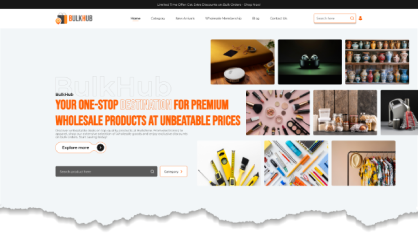
Are you looking to boost your website’s engagement and keep your visitors up-to-date by connecting your social media feed WordPress? If so, you've come to the correct spot.
Integrating social media to WordPress websites has become essential for maintaining a dynamic and engaging online presence. No matter what your website is about, connecting your social media to WordPress can enhance your website’s appeal by displaying real-time updates and fostering greater interactions with your audience and visitors. This integration will not only keep your content fresh and relevant but will also encourage visitors to follow your social media profiles. This, in return, will help in increasing your reach and engagement. Luckily, the steps to connect social media to WordPress websites are easy and straightforward. Even if you are a complete novice to this field you can accomplish this task in just a few simple steps. We will walk you through the quick and easy steps to connect your social media to WordPress to help you make your website vibrant, interactive and in sync with your social media activity.
So let’s get started.
Steps To Connect Social Media Feed WordPress Site
Here are 4 steps to connect your social media to WordPress websites. You’ll find these instructions easy to understand and implement, allowing you to maximize your online presence with ease.
1. Select the Social Media Platform of Your Choice:
The first step while connecting your social media to WordPress websites is to decide which social media channels you want to feature. This choice will influence the next steps such as choosing the appropriate free and premium WordPress plugin or widget and customizing the feed. If you wish to include only one channel, you might use the widgets or code provided by the social media platform itself. For example, Facebook offers a page plugin, Twitter (now X) provides instructions for embedding a timeline, and Pinterest has a widget builder. After generating the necessary code from these platforms, you can embed it directly into your website’s HTML on the desired page.
2. Choose Your Social Media Feed Plugin:
If you wish to include multiple social media channels or want to avoid dealing with code, choosing a social media feed plugin is your best option. There are several plugins available that support various platforms and provide easy integration. Popular choices include Juicer, which supports multiple platforms like Facebook, Twitter (now X), Instagram, and more. Walls.io creates social walls by pulling content from multiple platforms. Flo-Flow Social Stream offers both free and premium versions supporting numerous networks. Lastly, Smash Balloon Social is ideal for embedding Instagram feeds. But before you decide what plugin to choose to connect your social media feed WordPress website, review the features and functionalities of each plugin to select the one that best meets your needs, ensuring it supports the social media channels you have chosen.
3. Decide Where You You Want Your Social Media Feed To Be Published:
In this step you need to decide the placement of your social media feed on WordPress website to maximize visibility and engagement. Some common areas are homepage, sidebar, footer, or a dedicated social media page. Consider where your visitors are most likely to interact with the feed. For instance, placing it in the sidebar ensures it is visible across multiple pages, while adding it to the homepage can capture immediate attention. This step is crucial for integrating your social media content seamlessly into your website’s design and layout.
4. Select the Look of Your Feed:
You can customize the appearance of your social media feed to match your website’s branding and aesthetics. Most plugins offer various styling options, allowing you to adjust the layout, colors, fonts, and number of posts displayed. You can choose from grid layouts, carousels, or lists based on what complements your website’s design.
Reasons To Connect Your Social Media Feed WordPress Website:
Integrating your social media to WordPress website may not be suitable for every brand, as it depends on your objectives and current social media activity. However, there are certain situations where embedding your social media to WordPress website can be highly beneficial.
1. Gain More Followers on Social Media:
By connecting your social media to WordPress website, you provide an easy way for visitors to follow you on different platforms. This cross-promotion can help increase your social media following as visitors who enjoy your website content are likely to engage with you on social media as well.
2. Increase The Visibility Of Your Social Media Posts:
If your social media updates are clever and provide real-time value to your audience, displaying them on your website can increase their visibility. By connecting your social media feed WordPress website, every new update you share will automatically appear on your website, ensuring that your hard work on social media reaches a broader audience and pays off even more.
3. Emphasize Social Media Engagements With Your Brand:
Integrating your social media feed WordPress website can add crucial social proof, especially if your brand has established a strong social media community and consistently receives positive feedback from customers.Tweets from customers praising your product or Instagram posts showcasing customers using your products can be more convincing to prospective customers than anything you say by yourself.
How To Choose Which Social Media Channel To Connect?
Deciding which social media channel to integrate into your WordPress website is a crucial step in maximizing the benefits of your online presence. With limited space on your website, you want to make sure you choose the channel that will provide the most value. Here’s a detailed guide to help you make that decision:
1. Consider Your Audience's Location:
Consider where your target audience is most active. The social media feed on your website should be from the channel that your audience uses frequently. This increases the likelihood that visitors will follow you on those platforms.
2. Find Out Which Social Media Platform Has the Highest Interaction:
Look at the engagement metrics across your social media platforms. It’s not just about the number of followers but the level of interaction- likes, shares, comments, and overall engagement. The social channel that consistently shows high engagement is likely the best one to highlight on your website. Highlighting a channel with high engagement can showcase active conversations and social proof, making your website more lively and trustworthy.
3. Examine Your Social Objectives:
Identify what you aim to achieve with your social media presence. If you are looking to grow your presence on a particular platform, even if it currently has low engagement, embedding that feed can help increase its visibility and interactions. Alternatively, if your goal is to highlight customer feedback and testimonials, choose the channel where your audience is most vocal about your brand.
Websites and Social Media Share Benefits:
Your social media feed WordPress websites both provide direct channels for customer interaction. By integrating these two, you can enhance the effectiveness of both the platforms. This strategy will not only encourage more social media followers but also allow you to showcase the exclusive content from your social channels to your website visitors.
Conclusion:
In conclusion, connecting your social media feed WordPress website is a breeze! By following these quick steps, you can showcase your engaging social media presence and keep your visitors updated. Remember, a vibrant social media feed can significantly enhance your website's appeal and drive traffic.
Speaking of enhancing your website, VW Themes offers a fantastic WP theme bundle loaded with over 240+ premium WordPress themes. With a variety of designs and functionalities, you're sure to find the perfect theme to complement your brand and content. So, elevate your website's look and feel while seamlessly integrating your social media feeds – it's a win-win!









